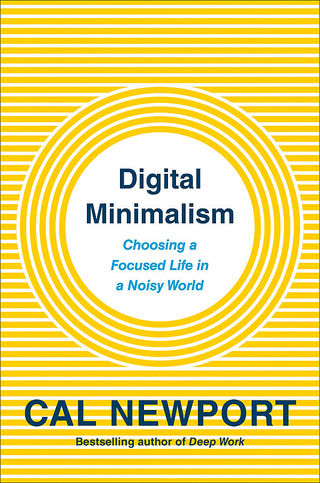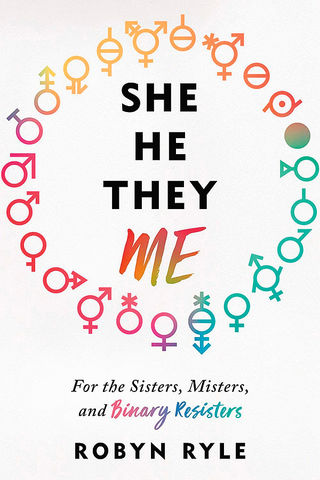The Annals of Self-Experimentation
A trio of new books offers roadmaps to personal discovery via close investigations of the subjects we hold most dear.
By Gary Drevitch published March 4, 2019 - last reviewed on March 4, 2019
When evaluating social science research, one is obligated to consider a study's sample size. For teams investigating fairly common scenarios—say, the most effective means of managing stress—an n of 40, meaning only forty subjects were surveyed, would be distressingly low. Data from hundreds of participants should deliver more telling results, assuming research methods are otherwise valid. But each of us goes through life conducting an unending psychological experiment with an n of 1—ourself. When we seek to make a change, whether in practice or perspective, we often turn to authors who have absorbed the findings of the most reliable research and translated them into realistic guidance. Three new books—Digital Minimalism by Cal Newport, She/He/They/Me by Robyn Ryle, and Experiments for Newlyweds by Shaun Gallagher—approach this goal in creative ways.
Newport, a computer science professor at Georgetown committed to helping people carve out a focused life in a culture rife with distraction, has consumed the data on just how hooked many of us have become on handheld social media delivery systems. For him, the problem with smartphones is essentially one of control. "Few want to spend so much time online," he writes, "but these tools have a way of cultivating behavioral addictions," and subsequently generating mental, spiritual, and even physical exhaustion.

Digital minimalism is Newport's proposed cure, and it harkens back to both Thoreau's philosophy of "simplicity, simplicity, simplicity," and Marcus Aurelius's insight, "You see how few things you have to do to live a satisfying and reverent life?" In 2018, Newport conducted his own experiment in "digital decluttering," soliciting volunteers to turn their online lives over to him for 30 days. (The 1,600 volunteers were perhaps already primed to make such a change, given that they were drawn from a list of the author's correspondents and followers.)
The group walked away from all "optional online activities" for the month, weaning themselves from apps and instead engaging with friends face-to-face, reading, and staring at clouds. Reports on the experience from Newport's volunteers, positive and otherwise, pepper the book, offering glimpses of what digital simplicity truly entails.
Newport cites research revealing the paradox that extended time on social media tends to leave people lonelier and more depressed, even if they don't realize it in the moment as likes and comments promote tiny rushes of dopamine. These findings seem counterintuitive; after all, isn't engaging with friends, even virtually, inherently social? Yes, but the catch, he argues, is that the small boosts we receive from online likes and comments "can't come close to compensating for the large loss experienced by no longer spending real-world time with that same friend."
Digital minimalists don't miss the small positive reinforcements of social media, over which they have no real control. Their goal is to avoid "diminishing the large things they already know for sure make a good life good." This includes face-to-face interaction that allows the brain to embrace its full interpretive potential to read body language for social cues, project into companions' minds, and anticipate next steps. Denying the mind this exercise and limiting it to scrolling news feeds, Newport believes, is worse than driving a Ferrari at the speed limit; it's like towing one behind a mule.
The reasons why some participants found decluttering to be a struggle are intriguing; some who dove in with the most rigor had the toughest time. Treating the experiment as a detox without planning substitutes for online activity (Newport himself is a fan of board games) or mapping out a gradual return to digital life was a common challenge. As with reported results of weight-loss attempts, those who tried to go cold turkey rather than embrace steady lifestyle change were less successful. Yet, even those who found the declutter fulfilling felt pangs, often in the interstitial moments of the day that have come to be swallowed up by apps—waiting in lines, moving between activities, commuting, and managing moments of office boredom. "I'd reach for my phone and then remember that everything was gone," one woman admitted.
At the end of the 30 days, participants found themselves in the enviable position of having a blank-slate digital life to rewrite any way they pleased, but ideally with intentionality and limits. Reading about volunteers' reboots is a reminder of how much of virtual life is optional—no one is obligated to devote time to the "low-quality leisure" of Twitter, Facebook, and Pinterest, Newport reminds us. "After about 30 minutes of aimless browsing, I kind of looked up and thought: Why am I doing this? This is...boring?" one woman reported post-declutter. (Parents reading Digital Minimalism will quickly note that this is distinctly not the experience of tweens and teens returning home from summer camp to quickly and fully re-engage with electronic devices. Newport concedes that a digital declutter may be more successful with those born before 1995, who still have vivid, positive memories of life before smartphones.)
A crucial ancillary benefit of a digital declutter for Newport is that it forces us to embrace time alone with our thoughts. Bemoaning our cultural state of "solitude deprivation," he notes how solitary moments of thought fueled minds like Benjamin Franklin's, Abraham Lincoln's, and Virginia Woolf's and wonders if millions today are at risk of forgetting this state of being altogether. Technology makes it feasible to fully eradicate reflective time from our lives. Newport's prescription could contribute to its revival.
Finding Your Way
In She/He/They/Me, Ryle, a professor of sociology and gender studies at Hanover College in Indiana, has created an engaging, choose-your-own-adventure-style guide to gender that encourages readers to travel down paths with which they may not be familiar. These guided thought experiments are opportunities to consider just how strongly our gender assignments influence our daily lives.

Readers can enter the book anywhere on the human lifespan—each page ends with a question whose answer determines where they'll go next. If they choose to begin their journey at birth, they are asked to choose whether they will emerge in a culture that recognizes one, two, or more genders in infancy. Next they must decide whether their natal "body of genital tissue" is longer than two-and-a-half centimeters, shorter than one centimeter, or somewhere in between, before turning ahead to discover their initial gender assignment.
"If you've lived your whole life in a culture where there are only two gender options," Ryle writes, "those are probably the only possibilities that you can imagine." Choosing a radically different path, then, can generate an almost suspenseful read as, say, you pick an intersex path, discover how it could play out in different societies, and begin to identify with those living under those circumstances. Other adventures lead to such far-flung cultures as the Awa community of New Guinea, where gender is not assigned until adolescence; the androgynous hijra community of India; and war-torn Syria, where gender inequality is stark and females face a high risk of teen pregnancy and maternal mortality.
Ryle's interest is not only biological. She is deeply committed to exploring the intersections of gender and law, work, and athletics. "If you're a woman and you have a body that's qualified to compete in the Olympics," she advises, on a page about chromosome and testosterone testing at the Games, "you might be surprised to discover something new about your gender"—the harsh reality that your sport's overseers may not recognize you as being of the gender with which you've identified throughout your life.
Some routes ask readers to consider the linkage of gender with factors like sexual preference, disability, body image, and race. Others are purely speculative ("Congratulations! You've been born into a world where there is no such thing as gender!"), and several are guided by readers' opinions about gender, such as the stop that begins, "You believe that gender is okay, but what we need to change is gender inequality. This is what many feminists believe, so feel free to call yourself one."
On a page where one lands after choosing, "You're socialized a boy in the contemporary United States," Ryle writes, "The tricky thing about gender socialization is that it works so well that we forget that gender could be any other way besides the particular version we're taught." Her book could help many take essential steps toward changing that reality.
Laboratory Couples
Individuals of all genders may share the goal of enrolling in a lifelong study of romance with an n of 2. In Experiments for Newlyweds, Gallagher, a science writer and editor, invites couples—newlywed, unwed, and otherwise—to reenact 50 recent social science studies that illustrate why relationships are so tricky and that reinforce the benefits of supporting each other in large and, especially, small ways. His summaries and takeaways make for a creative introduction to both research and commitment. Gallagher has made solid choices in the studies he presents, with easy-to-reproduce conditions that reinforce proven lessons on how to work together on budgeting, charity, travel, and division of household responsibilities, as well as generally being kind to each other.

Answering questions about teasing experiences in a relationship, for example, is likely to show that the teaser typically finds such encounters more satisfying than the one being teased, potentially helping the jokester in a couple learn to exercise some restraint. And spending three weeks tracking their relationship's conflicts and cuddling ought to remind partners moving past the honeymoon stage that nonsexual affectionate physical contact has a vital role in maintaining connection in stressful times, as multiple recent studies have confirmed.
Partners often come to remember even the major events in their relationships differently. Completing the experiment that asks them to see a new movie together, separately recall a specific scene, and then compare notes before rewatching the film, should drive home the lesson that collaboratively recounting memorable events from their shared life not only boosts accuracy but promises to reduce future disputes in front of grandkids.
Gallagher's primary message is the power of relationship maintenance. He believes that faithfully reproducing experimental conditions—such as one in which one partner attempts to convey specific emotions like anger, fear, happiness, gratitude, and sympathy to a blindfolded companion—should remind couples that they have many ways to communicate with and support each other. Astute families could conceivably keep a copy of his book on hand to revisit experiments over the years, tuning up their union as they reinforce these proofs of the value of an evolving n.
